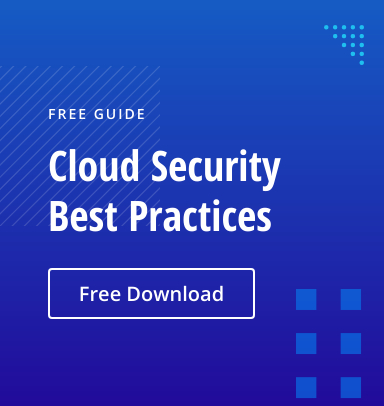Cloud Computing Security Tools help organizations protect sensitive data, applications, and infrastructure in hybrid and public cloud environments. Effective strategies include data governance, classification, DLP, encryption, and backup, combined with multi-factor authentication, CASBs, and user behavior monitoring. Vulnerability scanning, configuration auditing, and network segmentation further strengthen resilience and ensure compliance with regulations.
No matter where you host your data, there are always risks. The public cloud is no exception. While providers like Amazon, Microsoft and Google offer security features, ultimately, cloud security is your responsibility. Where do you start?
This article explains the key elements of a strong security posture in the cloud and how to choose the right security software solutions for your organization.
Tips for Building a Strong Cloud Security Posture
Cloud computing involves security challenges you might not encounter in an on-prem IT environment. With no perimeter or a vague perimeter, third-party access to your environment is easier compared to a traditional data center. Plus, cloud services rely on a shared responsibility model; the provider is primarily responsible for physical security and application availability.
Therefore, instead of fortifying your physical perimeter, you need to focus on data flows and user and application activity across your infrastructure. Key areas to pay attention to include:
- Security planning — Knowing how and why people and software applications use your data is crucial for determining how to properly secure it. Which data is critical to business operations? What can you afford to lose? Evaluate the sensitivity of your assets, map your data flows and understand your data lifecycle.
- Risk assessment — Don’t let someone else find your vulnerabilities; be proactive. Look for and mitigate gaps in your security posture.
- Security monitoring — Monitoring activity across your network and systems is essential for spotting active threats.
- Regulatory compliance: Cloud environments like Amazon Web Services, Azure and Google Cloud provide guides for GDPR compliance and can help with other regulations as well. But keep in mind that compliance is ultimately your responsibility.
Cloud Security Tools and Technologies
Users, data, applications and infrastructure all need specific protections. Here are the tools and technologies to consider in each area.
Data protection
The following security measures will help keep your data safe in cloud-hosted environments:
- Data access governance (DAG) — Strong governance is the foundation of data security. It involves carefully assigning permissions to access data and continuously monitoring for changes to access rights in order to rigorously enforce least privilege. Using built-in roles can be enormously helpful.
- Data discovery and classification — It’s critical to get a complete inventory of the data your organization stores and processes, and to classify and tag that data. The traditional categories of public, internal, confidential and restricted can be a good starting point. Then you can ensure that each type of data has appropriate protection measures in place. Automated remediation workflows are particularly helpful in keeping data secure.
- Data loss prevention (DLP) — DLP technologies can help you protect your sensitive data from being lost, misused or accessed by unauthorized people. DLP solutions can use business policies to detect improper activity and respond automatically, for example, by blocking a user from copying regulated data onto removable media.
- Encryption — Encryption helps keep data confidential, even if it’s stolen or accessed inappropriately in a public cloud environment. Cloud hosts offer multiple options for key management.
- Backup and recovery — You need to ensure you have reliable backups and the ability to restore data quickly in the event of accidental deletions or a catastrophe.
User Protection
- Authentication — In any cloud platform it’s important to implement a zero trust model and ensure each request to access your IT ecosystem is properly authorized. Multi-factor authentication (MFA) adds a layer of security by requiring two forms of identification, often a password and a code from a physical token or phone. Single sign-on reduces the need for repeated authentication and multiple passwords, simplifying access for users.
- Activity monitoring — Closely monitoring user activity is essential to threat detection. User behavior analytics can help you spot unusual activity across your cloud or hybrid environment promptly.
- Cloud access security broker (CASB) — A CASB is a software solution that sits between the users of a cloud service and the cloud applications, monitoring activity and enforcing your security policies across workloads.
Application Protection
Application protection involves a variety of tools and techniques, including the following:
- Vulnerability scanning and management — Open source databases track vulnerabilities in applications. The best application vulnerability management solutions do more than provide a risk score; they provide a remediation strategy and can even automatically remediate some issues for you.
- Static application security testing — You can also analyze your applications for security issues.
- Penetration testing — Pen testing analyzes your infrastructure from the viewpoint of a malicious It is particularly helpful for detection of misconfiguration and access management issues.
- Software composition — Gather insight on the open-source applications in your network.
- Change and configuration auditing — Monitoring all changes that could affect who can use particular applications and what those applications can access is also critical to security.
Infrastructure Protection
Cloud providers typically provide some tools for infrastructure protection, such as:
- Log management
- Anti-malware updates
- Host-based intrusion detection
- System integrity monitoring
- Network segmentation (firewalls and antivirus)
To get a holistic view of your network from physical layer to application layer, you can use a network traffic analyzer, which bundles together:
- Log centralization
- Configuration monitoring
- Network traffic analysis
- System file integrity
- Process canning
- Anti-phishing software
Conclusion
Cloud security is essential to any modern enterprise. To keep your data safe, you need to implement appropriate cloud security tools.
Free solutions can help companies secure their cloud environments. However, with the right comprehensive security platform, you’ll be better positioned to protect your users, data, applications and infrastructure.
 of ENG [Free Trial] short-840x350.jpg)


